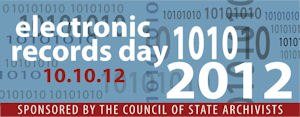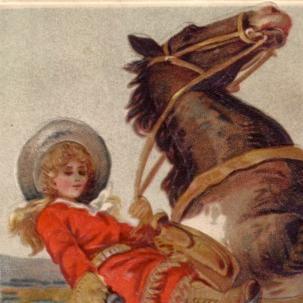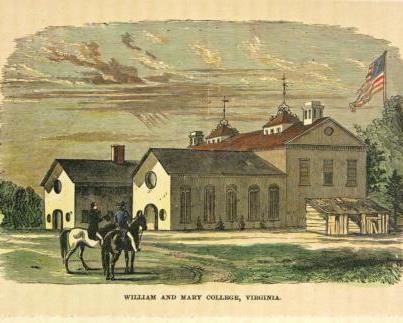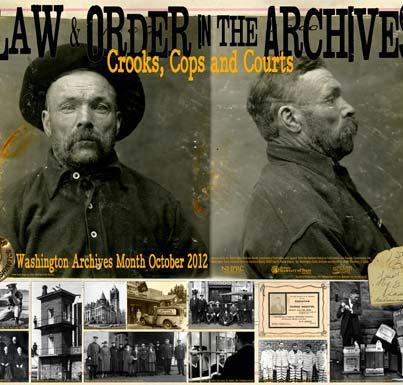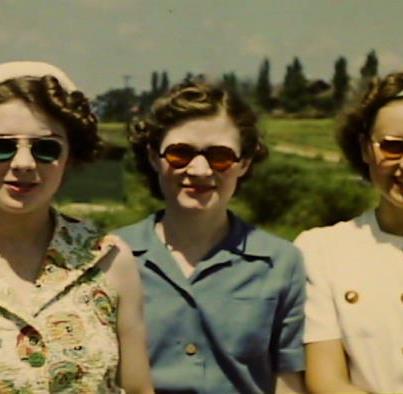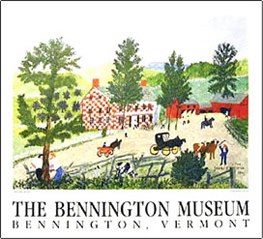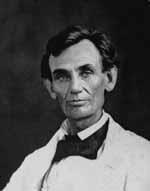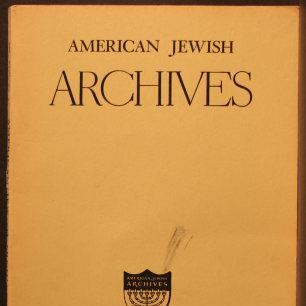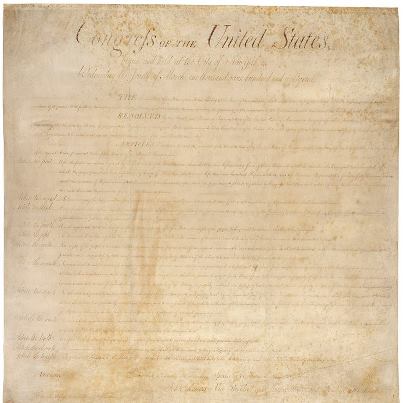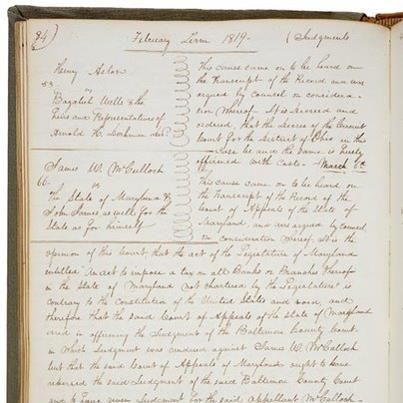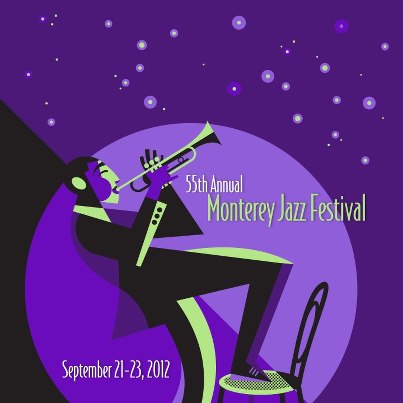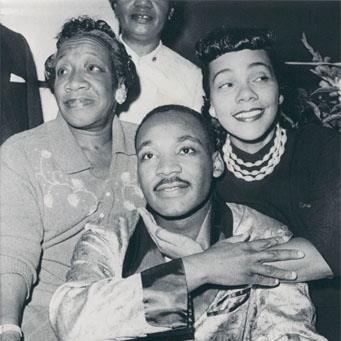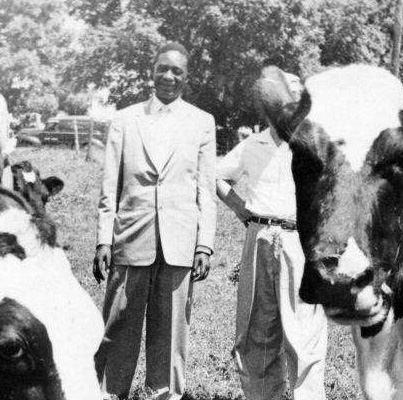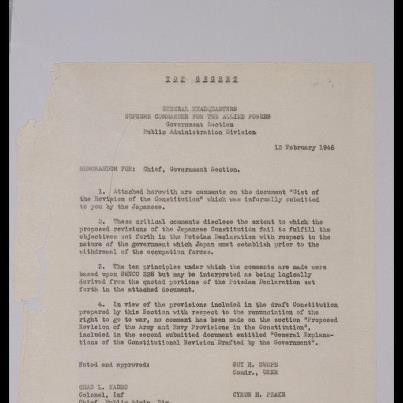- Also On
- October is Archives Month!
The Mississippi Department of Archives and History (MDAH), the Mississippi Historical Records Advisory Board (MHRAB), and the Society of Mississippi Archivists (SMA) are co-sponsoring a poster entitled “Mississip...pi: Going Places” to promote Mississippi Archives Month 2012. The poster features a 1924 automobile road map of the state and iconic advertising of the era.See More
Several Mississippi institutions will present events commemorating Archives Month. For example, the research library at MDAH in Jackson will be open for extended hours next Tuesday as a treat to regular patrons and as an invitation to new users. For information about events during Archives Month throughout Mississippi, please visit www.msarchivists.org.
Archives Month activities in Mississippi are supported by funding provided by the National Historical Publications and Records Commission. - The Cuban Missile Crisis in October of 1962 shook the world. In a White House meeting on October 16, President Kennedy was informed that reconnaissance photographs had revealed the presence of missile bases in Cuba.
The Presidential Recor...dings Program at the Miller Center, with the support of NHPRC grants, has transcribed the White House tapes of that meeting and others in the days that followed that give a behind the scenes account of the Administration's reaction and strategy. You can read all about it at http://millercenter.org/scripps/archive/presidentialrecordings/kennedy/1962/10_1962.See More - LikesSee All
- National Archives at AtlantaGovernment Organization
- US National Archives Students and InternsGovernment Organization
- Herbert Hoover Presidential Library and MuseumGovernment Organization
- Keith DonohueAuthor
- Harry S. Truman Library & MuseumMuseum · Community & Government
- Oct 15. 1860
Dear Sir,
My father has just home from the fair and brought home your picture and Mr. Hamlin's. I am a little girl only eleven years old, but want you should be President of the United States very much so I hope you wont thin...k me very bold to write to such a great man as you are. Have you any little girls about as large as I am if so give them my love and tell her to write to me if you cannot answer this letter. I have got 4 brother's and part of them will vote for you any way and if you will let your whiskers grow I will try and get the rest of them to vote for you you would look a great deal better for your face is so thin. All the ladies like whiskers and they would tease their husband's to vote for you and then you would be President. My father is a going to vote for you and if I was a man I would vote for you to but I will try and get every one to vote for you that I can I think that rail fence around your picture makes it look very pretty I have got a little baby sister she is nine weeks old and is just as cunning as can be. When you direct your letter dir[e]ct to Grace Bedell Westfield Chatauque County New YorkSee More
I must not write any more answer this letter right off Good bye
Grace Bedell
***
Oct 19. 1860
Miss. Grace Bedell Springfield, Ills.
My dear little Miss.
Your very agreeable letter of the 15th. is received.
I regret the necessity of saying I have no daughters. I have three sons---one seventeen, one nine, and one seven, years of age.
They, with their mother, constitute my whole family.
As to the whiskers, having never worn any, do you not think people would call it a piece of silly affection if I were to begin it now?
Your very sincere well-wisher A. LINCOLN.
--
The NHPRC is a proud sponsor of the Papers of Abraham Lincoln. For more info, go to http://papersofabrahamlincoln.org/. - 1010. Today is Electronic Records Day!
The Council of State Archivists in celebrating Electronic Records Day on October 10, 2012, providing opportunities to share information about managing digital resources and to enlist help in preservin...g electronic records. This celebration is designed to raise awareness among state government agencies, the general public, related professional organizations, and anyone else who can assist in this endeavor. More info is available at http://www.statearchivists.org/index.htm.See More
The NHPRC has a long history of supporting electronic records. The first electronic records grant awarded by the Commission was in 1979, to the University of Wisconsin and the State Historical Society of Wisconsin, to schedule, accession and retrieve information from machine-readable records of state agencies.
Beginning in 1991, the NHPRC guided and evaluated electronic records projects using a formal research agenda, which was reviewed and revised in 1996. The program shifted in the new century to fund a limited number of electronic records implementation projects. For more information, go to http://www.archives.gov/nhprc/projects/electronic-records/projects.html. - October is Archives Month!
In California, the Libraries and Archives of the Autry are holding a Tweet-a-thon, which you can follow @LA_Autry.
The Autry National Center is a history museum dedicated to exploring and sharing the stories, e...xperiences, and perceptions of the diverse peoples of the American West.See More
On each day of October staff will tweet one collection highlight from the Libraries and Archives of the Autry, https://twitter.com/LA_autry - October is Archives Month!
In Virginia, 19 archives across the state are celebrating "Boxes to Bandwidth: Reconstructing the Past for the Future." Archives Month is a collaborative effort to celebrate the commonwealth’s archival and specia...l collections repositories and the rich cultural record they protect. It is a project of the Library of Virginia, in conjunction with the Virginia State Historical Records Advisory Board, the National Historical Publications and Records Commission and the Mid-Atlantic Regional Archives Conference.See More
Some of the events scheduled around the state include tours of the Special Collections Research Center at the College of William & Mary, tours of the Archives of the Commonwealth at the Library of Virginia, lectures at the Virginia Historical Society, and more. Take a look at the schedule at http://www.lva.virginia.gov/public/archivesmonth/2012/index.htm. - October is Archives Month!
In Texas, the theme is "Preserving Texas' Civil War Records" in commemoration of the war's sesquicentennial and in recognition of the multitude of records throughout Texas that tell of the struggles of people wh...o lived through the most defining event of the 19th century.See More
With support from the NHPRC, Texas joins archival repositories across the nation to celebrate Archives Month and promote the preservation of our country's documentary heritage. Archives Month in Texas aims to celebrate the value of Texas' historical records, to publicize the many ways these records enrich our lives, to recognize those who maintain our communities' historical records, and to increase public awareness of the importance of preserving historical treasures and making them available for use by present and future generations.
For a list of events in the Lone Star State, go to https://www.tsl.state.tx.us/arc/thrab/archivesmonth.html. - October is Archives Month!
In Washington, the state has taken the theme of "LAW & ORDER IN THE ARCHIVES: Crooks, Cops and Courts." The month-long event, part of a national celebration, is co-sponsored by the Washington State Archives. Stat...e penitentiary guards, Supreme Court justices, mugshot books, county clerk records, and even prisoner shackles are all documented in photographs, court records, artifacts and ephemera in institutions across the state.See More
For a look at what's happening in the Evergreen State, go to http://www.sos.wa.gov/archives/month/
State Archivist Jerry Handfield says, "Thanks to our main State Archives office in Olympia and our branches throughout Washington, people now and in the future can learn about the people, events and stories that make up the fabric of our state’s interesting past. Whether it’s a famous Washingtonian or someone’s own family history, Archives can help direct you toward the documents and resources that will help you in your search." - October is Archives Month!
All across the country, state historical records advisory boards are celebrating American archives. Illinois Archives Month is jointly sponsored by the Illinois Secretary of State, the Illinois State Archives, t...he Illinois State Historical Records Advisory Board, and the Chicago Area Archivists (CAA)--with grant support from the NHPRC. A list of celebratory events is at http://www.cyberdriveillinois.com/departments/archives/ISHRAB/archives_month/events.html.See More
One of our favorite events is Home Movie Day, as seen in the screengrab from the event in Chicago. Home Movie Day is a celebration of amateur films and filmmaking held annually at many local venues worldwide. It was conceived by the Center for Home Movies in 2002 as a means to promote the preservation and appreciation of home movies. Chicago Film Archives has hosted an annual Chicago Home Movie Day for the past 9 years, and this year's celebration is scheduled for October 20. More info at http://www.chicagofilmarchives.org/current-events/chicago-home-movie-day-2012-10th-anniversary. - Happy Archives Month!
The Council of State Archivists has uploaded a set of American Archives Month posters -- many from NHPRC grantees -- to help celebrate the occasion.
http://www.flickr.com/photos/councilofstatearchivists/sets/72157631612760909/with/8021140501/ - In 2009 the Bennington Museum in Vermont received a grant from the National Historical Publications and Records Commission to establish an archive program. Since opening to the public in 1928, the museum has collected archival and manuscri...pts. During the grant period, it cataloged the following archival collections: Hall Park McCullough (notable for its focus on early Vermont records and documents related to the Revolutionary War), records and catalogs from the Cushman Company of North Bennington (makers of Cushman Colonial Creations furniture), and the papers of Civil War general Edward Hastings Ripley of Rutland, Vermont. In January 2010 the museum received a generous gift of the papers of Patsy Santo along with a painting by the local folk artist. These papers have been processed and added to the museum’s archives as part of the larger NHPRC archival project.See More
For more information on the Bennington Museum, go to www.benningtonmuseum.org. - At some point in the 1850s, Abraham Lincoln prepared some notes for a law lecture, based on his long experience at being a lawyer. The notes end with this paragraph:
"There is a vague popular belief that lawyers are necessarily dishonest. ...I say vague, because when we consider what extent confidence, and honors are reposed in, and conferred upon lawyers by the people, it appears improbable that their impression of dishonesty, is very distinct and vivid. Yet the expression is common, almost universal. Let no young man, choosing the law for a calling, for a moment yield to this popular belief. Resolve to be honest at all events; and if, in your own judgement, you can not be an honest-lawyer, resolve to be honest without being a lawyer. Choose some other occupation, rather than one in the choosing of which you do, in advance, consent to be a knave."See More
From the Papers of Abraham Lincoln, a project supported through grants from the NHPRC. For more info on Lincoln's law practice, go to http://www.lawpracticeofabrahamlincoln.org/Search.aspx. - Hebrew Union College/Jewish Institute of Religion in Cincinnati, with support from a grant from the NHPRC, is undertaking a two-year project for its American Jewish Archives to process its backlog of historical records totaling 1,800 cubic...feet. The collections document the broad scope of American Jewish society-political, economic, communal, professional, philanthropic, family, and religious-through the papers and records of rabbis, synagogues, social groups, individuals, and organizations.See More
The Jacob Rader Marcus Center of the American Jewish Archives, located on the Cincinnati campus of Hebrew Union College-Jewish Institute of Religion, houses over ten million pages of documentation. It contains nearly 8,000 linear feet of archives, manuscripts, photographs, audio and video tapes, microfilm, and genealogical materials.
The Archives was founded by the late Dr. Jacob Rader Marcus in 1947 in the aftermath of World War II and the Holocaust. For over a half century, the American Jewish Archives has been preserving American Jewish history and imparting it to the next generation.
For more information, go to http://americanjewisharchives.org/. - Criticized for the lack of protections against tyranny in the Constitution, the First Congress of the United States proposed 12 amendments to address those arguments on September 25, 1789. Articles 3 to 12, ratified December 15, 1791, by th...ree-fourths of the state legislatures, constitute the first 10 amendments of the Constitution, known as the Bill of Rights.See More
Many supporters and opponents of the proposed amendments considered them a diversion from substantive changes to the Constitution. Aedanus Burke, an anti-federalist Congressman from South Carolina, asserted on August 15, 1789 that they were “little better than whipsyllabub, frothy and full of wind” and were like “a tub thrown out to a whale, to secure the freight of the ship and its peaceable voyage.” His friends in Congress would recognize the allusion to Jonathan Swift's "A Tale of the Tub."
James Madison argued that the amendments were a response to the anti-federalists and to the constituents who had attended the state ratification conventions: "Have not the people been told that the rights of conscience, the freedom of speech, the liberty of the press, and trail by jury, were in jeopardy; that they ought not adopt the constitution until these rights are secured to them."
You can read more about the debates in http://www.gwu.edu/~ffcp/publications.html, the First Federal Congress project, supported through NHPRC grants. - Today is John Marshall's birthday. Marshall was the Chief Justice of the United States (1801–1835) and was instrumental in asserting the role of the Supreme Court of the United States in the balance of power among the legislative, executiv...e, and judicial branches. His decision in the landmark Supreme Court case McCulloch v. Maryland (seen here) was one of the most important cases regarding the issue of the division of powers between state and the Federal Government. You can read more about that document at http://www.ourdocuments.gov/doc.php?flash=true&doc=21.See More
The NHPRC funded the publication of the Papers of John Marshall. Founded in 1966, the documentary edition began with collecting and assembling the available papers. Since no large group of Marshall papers has survived, a collection had to be created from a search of public and private respositories throughout the United States—the most important of which are the Library of Congress, the National Archives, the College of William and Mary, the Virginia Historical Society, the Library of Virginia, the Historical Society of Pennsylvania, the New-York Historical Society, and the Massachusetts Historical Society. Foreign archives such as the British Public Record Office were also searched. In addition, all known Marshall descendants were canvassed for possible holdings of manuscript material. Although the project has ended, copies of the documents are maintained in the Marshall-Wythe Law Library at the College of William and Mary. The twelve volume edition was completed in 2006.
For more on the Marshall papers, go to http://oieahc.wm.edu/marshall/index.htm. - If you are going to San Francisco, make sure to get out to Monterey for the Jazz Festival starting today.
Now in its 55th year, the Monterey is the world’s longest continuously running jazz festival. Its archives are held by the Stanford ...Archive of Recorded Sound (http://collections.stanford.edu/mjf/) which documents early 9,000 performances and other segments representing 1,000 hours of audio and video content described in its database.See More
Some of the most significant jazz musicians of our time — Dizzy Gillespie, John Lewis, Shelly Manne, Gerry Mulligan, Dave Brubeck, Louis Armstrong, Art Farmer, Ernestine Anderson, Harry James, Max Roach, and Billie Holiday — appeared in the sylvan setting in Northern California to perform and astonish audiences. Every year since then, every third full weekend in September sees the same caliber of talent grace the now nine stages on the Monterey Fairgrounds, as the Monterey Jazz Festival presents the best jazz performers in the world for a three-day celebration of the best in jazz. The recordings over a half century document the most significant jazz musicians of the 20th century.
Through an NHPRC grant, these fragile, aging and degrading media have been saved and properly stored, providing a priceless history of the unique American sound of jazz.
The Stanford Archive of Recorded Sound, which also turns 55 this academic year, contains about 350,000 sound recordings and 6,000 print and manuscript items, documenting all aspects of 20th- and 21st-century culture. It is one of the five largest sound archives in the United States. - On September 20, 1958, Martin Luther King, Jr. was signing copies of his book "Stride Toward Freedom" at a department store in New York, when a woman approached him and stabbed him in the chest with a letter opener. Rushed to the hospital,...King endured a two-and-a-quarter-hour operation to repair the damage.See More
Five weeks later, he arrived home to Montgomery, Alabama, and issued a statement of thanks to his supporters there that concluded:
...I shall long remember, not the physical injury, or the pain I suffered, for we all suffer in life and suffering comes to an end more quickly than we know. What I shall remember, vividly, is the vast outpouring of sympathy and affection that came to me literally from everywhere--from Negro and white, from Catholic, Protestant, and Jew, from the simple, the uneducated, the celebrities and the great. I know that his affection was not for me alone. Indeed it was far too much for any one man to deserve. It was really for you. It was an expression of the fact that the Montgomery Story had moved the hearts of men everywhere. Through me, the many thousands of people who wrote of their admiration, were really writing of their love for you. This is worth remembering. This is worth holding on to as we strive on from Freedom. And finally, as I indicated before, the experience I had in New York gave me time to think. I believe that I have sunk deeper the roots of my conviction that non-violent resistance is the true path for overcoming injustice and stamping out evil.
From The Papers of Martin Luther King, Jr., supported by the NHPRC, at Stanford University. More info on the project at http://mlk-kpp01.stanford.edu/ - In Kansas, the Johnson County Archives and Records Management Division is quietly celebrating its 20th anniversary. Established in 1990 under a grant from the National Historical Publications and Records Commission, the archives program bec...ame a county division with staff two years later. You can reach the archives at http://rta.jocogov.org/archive-services.See More
Under its care are an estimated 51 million pages of historical documents from county government and court systems along with 5,402 ledgers and scores of old township maps, dating back to the founding of Johnson County 157 years ago. Included in their collection are documents penned by Thomas Johnson, a Methodist minister who established a mission among the Shawnee Indians. The county was named after him when it was created in 1855.
The Johnson County Archives are part of the JoCoHistory, a collaborative presentation of the history of the area from the Johnson County Museum and partners. There you can see photos of Kansas scenes (such as these men at a county fair), access services related to local history and events, and get curriculum tools for area teachers and public schools. JoCoHistory is at http://www.jocohistory.org/cdm/. - The United States Constitution has proven to be a model for other nations, and after World War II, U.S. diplomats helped the new governments in Japan and Germany create new constitutions.
Through a grant from the NHPRC, the Amherst College...Library has processed the papers of Charles Kades, who helped draft the postwar Japanese constitution and was central to the articulation of a new role for the Japanese emperor and to redefining the Japanese military as a self-defense force. Charles L. Kades (1906-1996) was a lawyer and U.S. army officer who served in the Government Section of the General Headquarters of the Supreme Commander of the Allied Powers (SCAP) in post-war Japan. His papers include extensive correspondence on questions of constitutional law, as well as rare copies of the minutes of the Japanese Diet. Seen here is Kades’s “Top Secret” memo on the first draft.See More
You can find the Finding Aids in the Five College Archives & Manuscripts Collection at http://asteria.fivecolleges.edu/findaids/amherst/list.
Japan’s National Diet Library has an interesting history of their constitution at http://www.ndl.go.jp/constitution/e/index.html. - ActivityOctoberPeople Who Like ThisVisits312











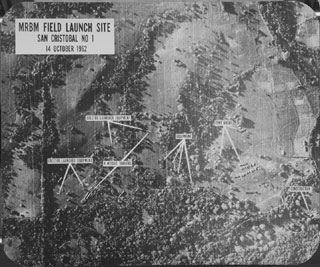





![Photo: Oct 15. 1860
Dear Sir,
My father has just home from the fair and brought home your picture and Mr. Hamlin's. I am a little girl only eleven years old, but want you should be President of the United States very much so I hope you wont think me very bold to write to such a great man as you are. Have you any little girls about as large as I am if so give them my love and tell her to write to me if you cannot answer this letter. I have got 4 brother's and part of them will vote for you any way and if you will let your whiskers grow I will try and get the rest of them to vote for you you would look a great deal better for your face is so thin. All the ladies like whiskers and they would tease their husband's to vote for you and then you would be President. My father is a going to vote for you and if I was a man I would vote for you to but I will try and get every one to vote for you that I can I think that rail fence around your picture makes it look very pretty I have got a little baby sister she is nine weeks old and is just as cunning as can be. When you direct your letter dir[e]ct to Grace Bedell Westfield Chatauque County New York
I must not write any more answer this letter right off Good bye
Grace Bedell
***
Oct 19. 1860
Miss. Grace Bedell Springfield, Ills.
My dear little Miss.
Your very agreeable letter of the 15th. is received.
I regret the necessity of saying I have no daughters. I have three sons---one seventeen, one nine, and one seven, years of age.
They, with their mother, constitute my whole family.
As to the whiskers, having never worn any, do you not think people would call it a piece of silly affection if I were to begin it now?
Your very sincere well-wisher A. LINCOLN.
--
The NHPRC is a proud sponsor of the Papers of Abraham Lincoln. For more info, go to http://papersofabrahamlincoln.org/.](https://cybercemetery.unt.edu/archive/oilspill/20121018081525im_/https://sphotos-b.xx.fbcdn.net/hphotos-prn1/c73.0.403.403/p403x403/30355_10151087642018333_1944227808_n.jpg)
